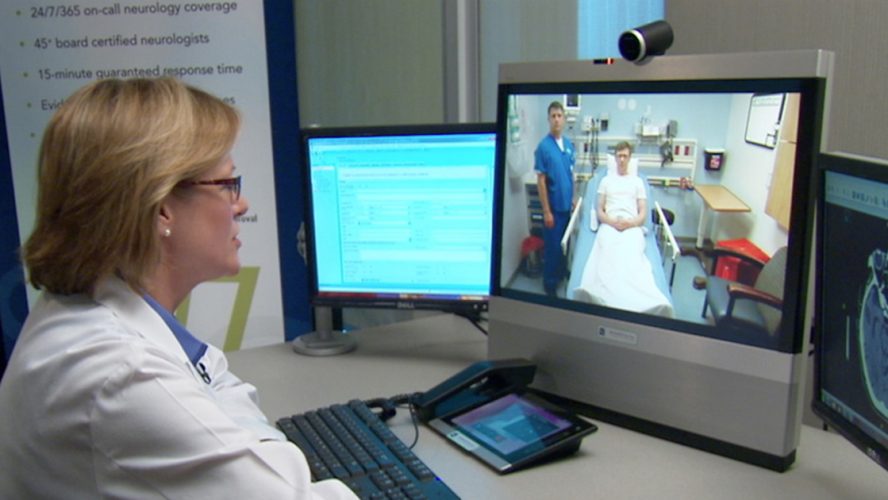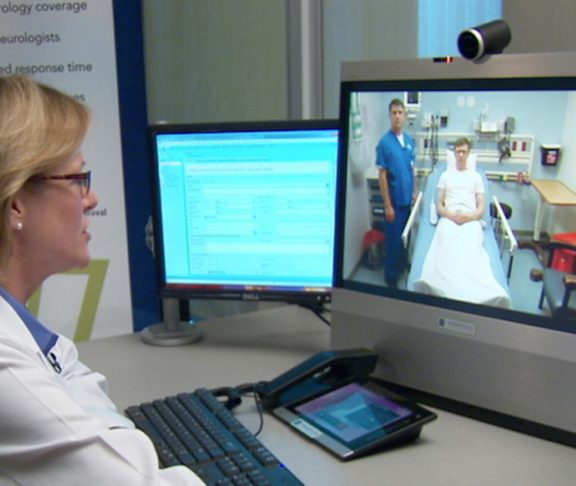During a stroke, 1.9 million brain cells are killed every minute due to oxygen being cut off. Getting fast treatment is essential. That’s why telemedicine, which matches patients with expert practitioners via audio and video technology, is so promising.
“Many hospitals around the country, and not just rural areas, but in urban and suburban areas, do not have the expertise available immediately to manage stroke patients,” says Dr. Til Jolly, a board-certified emergency physician with 26 years of experience practicing in the Washington, D.C. area at both the George Washington University Hospital and Inova Fairfax Hospital.
Emergency room physicians do the initial management but often need to call in experts.
“Telemedicine is used increasingly to provide that expertise and to help with the urgent decision-making needed to get the care to the patient,” says Dr. Jolly, chief medical officer for SOC Telemed (SOC), the largest national provider — available in 38 states — of telemedicine services.
Critical timing
With stroke cases, the goal is for doctors to assess a patient as quickly and efficiently as possible. There are two standard stroke treatments and doctors need to decide which patients qualify for each therapy and which ones don’t.
The first therapy is to give stroke patients a clot-dissolving medication called tPA. To work, the drug must be given intravenously within 4.5 hours from the time of the onset of symptoms. Hospitals monitor a patient’s door-to-needle time — the time between when the patient arrives at the hospital and the time the initial dose of tPA is given. “The target is to get a door-to-needle time of less than 45-60 minutes, which means a lot of things need to happen in that period of time,” says Dr. Jolly. “Telemedicine can speed that up because video connection can be nearly instant.”
The other therapy, endovascular therapy, is when a highly trained specialist places a catheter into the blood vessel in the brain and extracts the clot. Telemedicine doctors can assess the patient’s eligibility for the treatment (which has a larger time window than tPA) and if needed, recommend transferring the patient to a different facility that performs that procedure.
The technology provides a valuable resource for patients and facilities. Without it, patients might not receive the expert care they need in time; or they may have to be transferred to another facility, a move that can be risky, especially depending on the patient’s condition and ability to travel.
New standard
The American Hospital Association reports 65 percent of hospitals use technology to connect patients with practitioners who are located at a distance. All telemedicine doctors must be licensed in the state where they’re doing consultations.
“Telemedicine is now accepted as the standard,” says Dr. Jolly, who explains the technology is used across medicine for primary care, as well as specialties.
SOC has been offering emergency telemedicine since 2005. They’re currently working with 500 hospitals and providers across the country.
Patients and providers
Dr. Jolly says both patients and providers appreciate the potential of the life-saving technology.
He says hospitals contract for it because they see the benefits. He encourages doctors and other health care professionals to talk to their hospital leadership about incorporating telemedicine technology into emergency rooms.
He also advises patients, especially those with risk of stroke, to ask their doctors and providers what services, including telemedicine, are available to treat strokes.
“The real idea is to try to bring the best possible care to every patient, no matter where that patient is,” says Dr. Jolly, noting all patients should have the same level of expertise available to them, regardless of distance.


